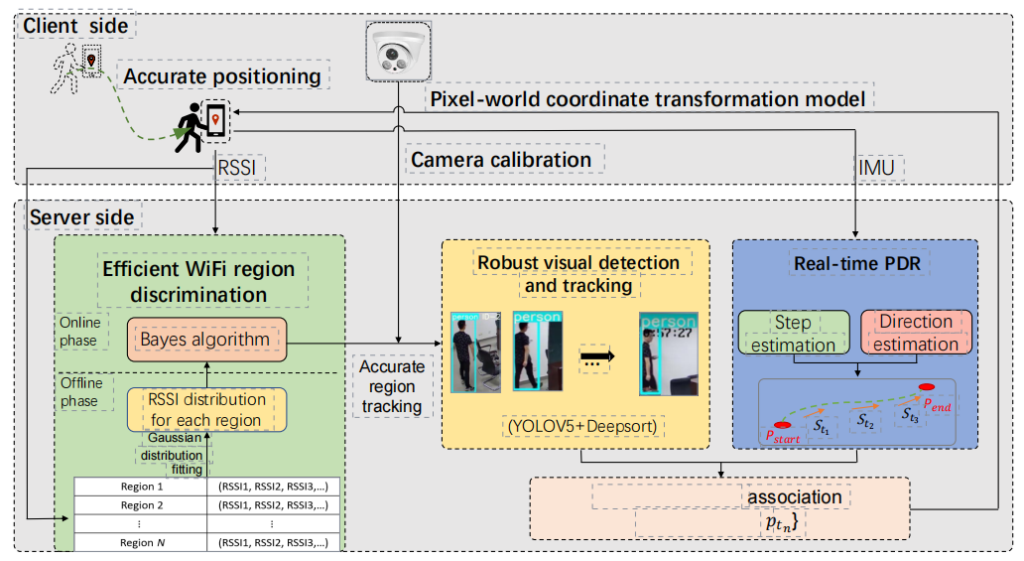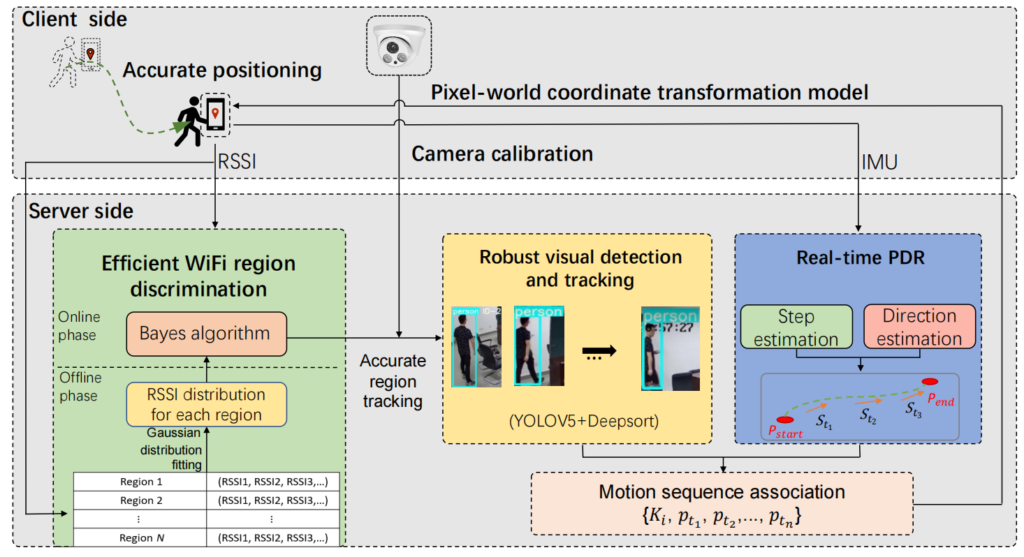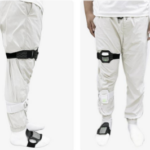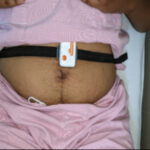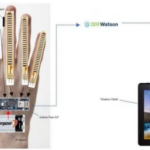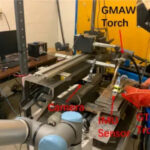Current navigation systems, such as Global Positioning System (GPS) or Global Navigation Satellite System (GLONASS), can provide very high accuracy positioning information in outdoor environments, but very limited accuracy in indoor environments. Therefore, accurate indoor positioning and tracking has become a new hotspot and has spawned a series of research applications, but a single indoor positioning method based on Wi-Fi fingerprinting, surveillance cameras, or pedestrian heading projection (PDR) suffers from low accuracy, limited tracking area, and accumulated errors. To address these problems, Li Zhang's research team from China has proposed a new solution for indoor localization.
Figure 1 System Overview
The solution consists of a two-stage indoor positioning system (iWVP for short) that integrates wireless fingerprints (Wi-Fi fingerprints), vision (Vision), and pedestrian heading projection (PDR). The system first uses Wi-Fi fingerprints to roughly locate pedestrians, and then fuses data from surveillance cameras and IMU (Inertial Measurement Unit) to precisely locate them, using a motion sequence-based matching algorithm to confirm pedestrian identity, improving output accuracy and avoiding the shortcomings of previous single indoor positioning methods.
The two phases of indoor positioning are divided into coarse positioning phase and fine positioning phase. In the coarse positioning phase, the Wi-Fi signal is combined with Bayesian filter for area discrimination to ensure high accuracy of area positioning; in the fine positioning phase, fusion detection and fusion tracking are performed.
In this study, extensive experiments were conducted in several scenarios in the lab, hall and corridor, all of which were installed with surveillance cameras and wireless sensors. The experimental scenarios have different floor layouts, different wireless environments and different user behavior patterns as a way to build the complexity of the indoor environment.
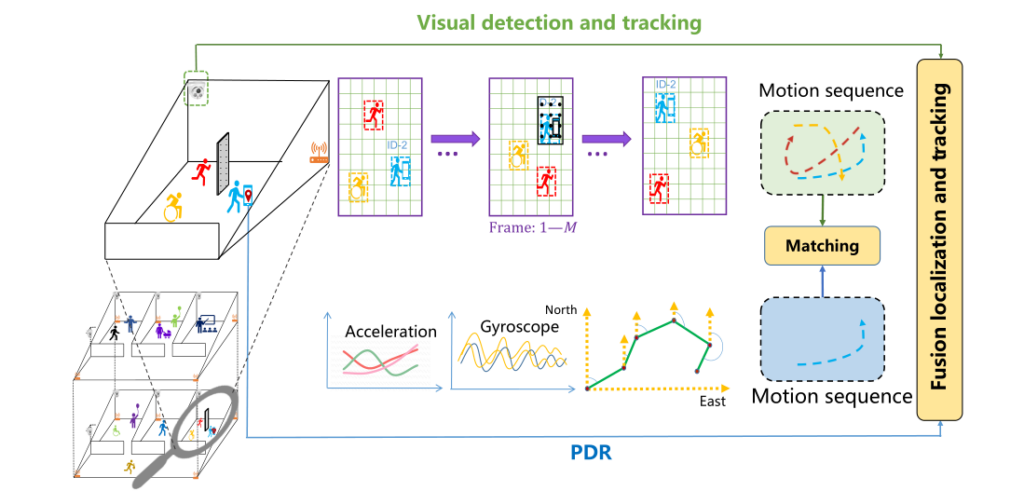
Figure 2 Overview of fusion tracking
The experimental results show that the overall tracking success rate of iWVP is 97% in a complex environment with an average positioning error of 4.61cm, which can effectively track pedestrians in multiple areas in a complex and dynamic indoor environment.
Figure 3 Different noise intensity
Three different levels of visual noise were also introduced in the experiments to evaluate the robustness of the iWVP system. As shown in Figure 3, iWVP performs almost as well under high noise (multi-pedestrian environment) as it does under low noise (single pedestrian environment). And even in the high-noise environment, the average localization error of iWVP is still less than 7 cm.
In addition, the performance of iWVP has been effectively verified through its implementation on commercial mobile devices. It is believed that in the future, we can achieve more accurate and fast positioning tracking, especially in buildings with complex indoor environments, such as airport halls and supermarkets, and in high-rise buildings with complex structures, customers can accurately find the location of merchants based on positioning information, and merchants can also push preferential information to nearby customers through positioning information; in emergency situations, such as fire rescue and medical rescue, the Staff can start rescue work based on accurate navigation and positioning information.
【Zhang L, Bao J, Xu Y, et al. From Coarse to Fine: Two-Stage Indoor Localization with Multisensor Fusion[J]. Tsinghua Science and Technology, 2022, 28(3): 552-565.

